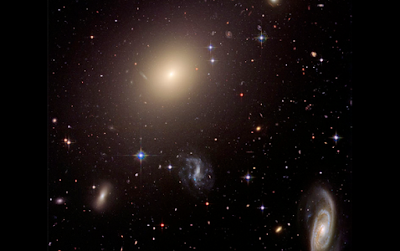Topics: Astrophysics, Cosmology, Einstein, General Relativity
Astronomers have used a pair of galaxies far beyond the Milky Way to test general relativity with unprecedented precision
Three years ago astrophysicist Tom Collett set out to test a theory. Not just any theory, but one that sets scientists’ expectations for how the universe operates at large: Einstein’s general relativity. First published in 1915, the theory mathematically describes how gravity emerges from the fundamental geometry of space and time, or spacetime, as physicists call it. It postulates that dense objects, such as Earth and the sun, create valleylike dips in spacetime that manifest as gravity—the force that binds together a galaxy’s swirling stars, places planets around suns and, on Earth (or any other planet), keeps your feet on the ground.
Einstein’s equations underpin a host of real-world applications such as the global positioning satellites that make precise navigation and split-second financial transactions possible around the planet. They also elucidate several otherwise-inexplicable phenomena, including Mercury’s oddball orbit, as well as predict new ones, such as gravitational waves—ripples in spacetime that were only directly observed a century after general relativity’s debut. In test after test, whether here on Earth or in observations of the distant universe, the theory has emerged unscathed—a success so stunningly unshakeable it draws a certain breed of scientists like moths to a flame—each seeking to reveal cracks in Einstein’s edifice that could lead to the next breakthrough in physics.
Collett, a research fellow at the University of Portsmouth in England, is among them. “General relativity is so fundamental to the assumptions we make in our interpretation of cosmological and astrophysical data sets that we’d better be sure it’s right,” he says. With that mind-set, in 2015 Collett partnered with nine colleagues to perform the most sensitive experiment yet to test whether Einstein’s famed theory holds up at the scale of an entire galaxy. Their results, published June 21 in Science, reiterate Einstein’s theory still reigns supreme.
Einstein’s Greatest Theory Validated on a Galactic Scale, Maya Miller, Scientific American

Comments